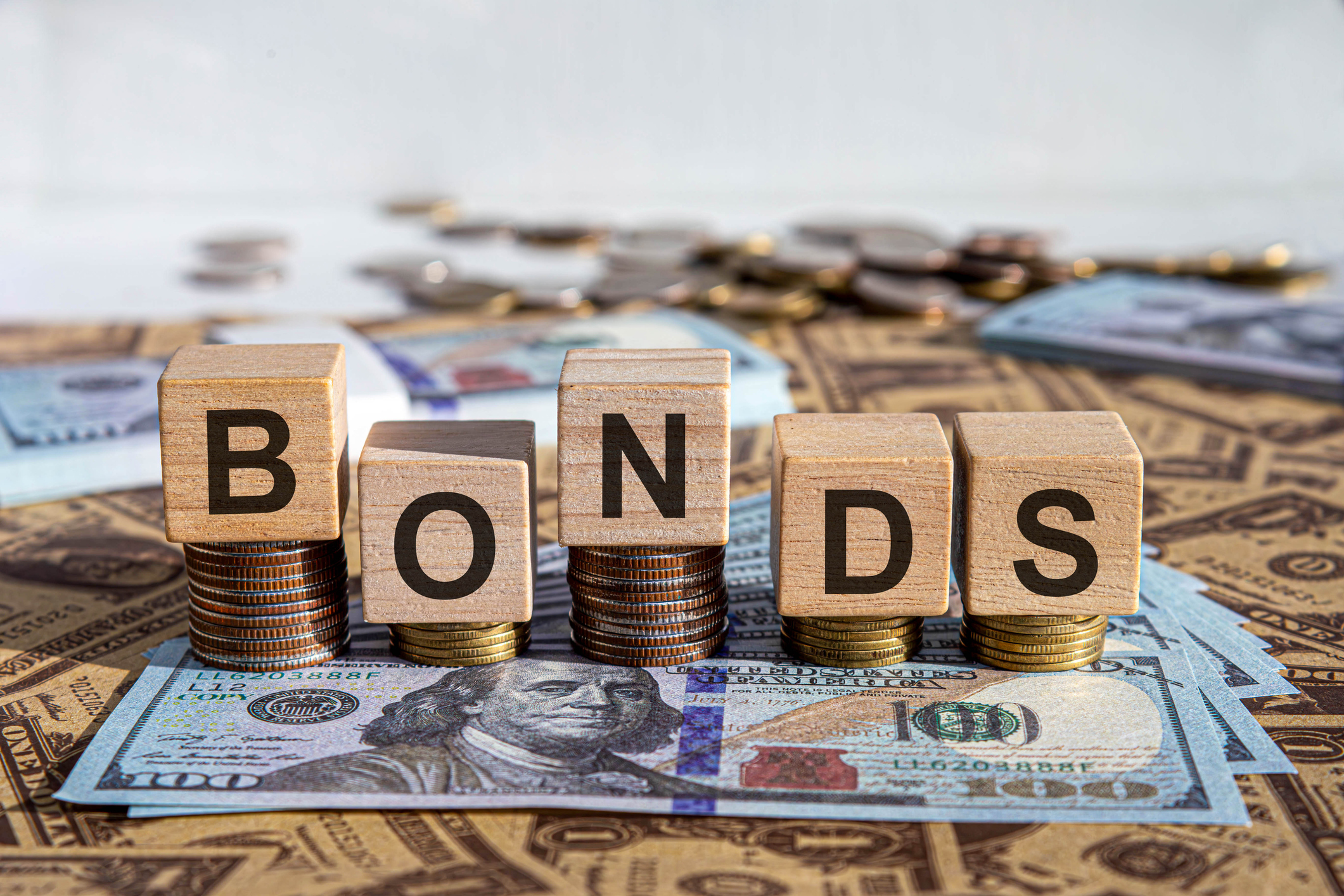Dip Your Toes Into Stocks With Bonds
Convertible bonds pay interest but can also grow like stocks.

When stocks are unsteady, convertible bonds can be a refuge. Converts are securities with traits of both bonds and stocks. The idea is to earn some of the appreciation when the company's stock price rises but also to defend your principal when the stock falls. Converts have proven their worth in lean years. On average, the Merrill Lynch All U.S. Convertible Bonds index beat Standard & Poor's 500-stock index by a total of 14 percentage points during the 2000Ð02 bear market.
Technically, converts are a type of bond; there's a fixed-interest coupon and maturity date. So if you don't sell and the firm doesn't default, you're guaranteed to recoup the face value eventually. The main difference between a convertible and a regular bond is that you can exchange a convert for a set number of shares of the common stock. For that reason, if a company's stock rises, its converts become more valuable. If the stock lags, well, you're still a bondholder and will get some interest income, although it'll be less than what you would have collected with a standard bond. Convertible bonds today yield an average of 2.5%.
It sounds complicated, and it is. Most convertibles come with a slew of terms and conditions that make them tough to analyze and price. So most individuals should invest in converts through mutual funds.
From just $107.88 $24.99 for Kiplinger Personal Finance
Become a smarter, better informed investor. Subscribe from just $107.88 $24.99, plus get up to 4 Special Issues

Sign up for Kiplinger’s Free Newsletters
Profit and prosper with the best of expert advice on investing, taxes, retirement, personal finance and more - straight to your e-mail.
Profit and prosper with the best of expert advice - straight to your e-mail.
An excellent low-risk choice is Vanguard Convertible Securities (symbol VCVSX; 800-635-1511). It holds 90% of assets in convertible bonds and 8% in convertible preferred stocks, which are similar. Manager Larry Keele, who has been with the fund since 1996, estimates potential losses and gains of each convertible primarily on the basis of its terms and the bond's price. A stock's appreciation potential is secondary. "We're not stock pickers or economic forecasters," Keele says. The fund returned 9% annualized over the past ten years to April 2, beating the S&P 500 by an average of one percentage point per year with substantially less volatility. It currently yields 3.1%.
In contrast, the leader of the convertible-fund pack is considerably more aggressive. Fidelity Convertible Securities (FCVSX; 800-343-3548) has been the top-performing no-load fund in the category since Tom Soviero became its manager in June 2005, with an annualized gain of 17% over his tenure. Soviero's background is in high-yield bonds and stock picking (he's run Fidelity Leveraged Company fund since 2003), and it shows. He goes for misunderstood, beaten-down converts with turnaround potential, as well as winners that trade more like high-powered growth stocks. The trade-off is a lower yield, recently 1.8%.
Moreover, Soviero keeps 15% to 20% of assets in ordinary stocks, so Fidelity Convertible is more exposed to general stock-market downturns than the Vanguard fund is. Fidelity's long-term record is outstanding -- an annualized 13% over the past decade -- but the fund's manager has changed frequently. If Soviero moves on, check his successor's background.
How they work: Convertible bonds 101
Auto-parts maker ArvinMeritor issues convertible bonds that mature in 2027 and pay 4% interest. Each bond, priced at $1,000, converts to about 37 ArvinMeritor shares, trading at $19 at the time of issue. With the shares worth a total of $703, the bond has no conversion value.
Scenario 1: The stock soars to $35 over the next year. The bond's price could rise to about $1,400.
Scenario 2: The stock plunges to $5. The bond will likely fall to roughly $800, trading in line with regular bonds of similar quality and maturity. (Standard & Poor's gives ArvinMeritor's debt a junk rating of BB-.)
Scenario 3: The stock stays at $19. The bond's price will probably remain about $1,000. Even if the stock stays in a rut for a long time, the bond will maintain its value as long as the firm is on a sound footing.
Profit and prosper with the best of Kiplinger's advice on investing, taxes, retirement, personal finance and much more. Delivered daily. Enter your email in the box and click Sign Me Up.

-
 Changes Are Coming for This Invesco Bond Fund
Changes Are Coming for This Invesco Bond FundThe Invesco BulletShares 2026 Corporate Bond ETF's bonds will mature in 2026. Here's what investors should do.
-
 What Science Reveals About Money and a Happy Retirement
What Science Reveals About Money and a Happy RetirementWhether you’re still planning or already retired, these research-based insights point the way to your best post-work life.
-
 7 Retirement Planning Trends: What They Mean for You in 2026
7 Retirement Planning Trends: What They Mean for You in 2026From government shutdowns to market swings, the past 12 months have been nothing if not eventful. The key trends can help you improve your own financial plan.
-
 What the Rich Know About Investing That You Don't
What the Rich Know About Investing That You Don'tPeople like Warren Buffett become people like Warren Buffett by following basic rules and being disciplined. Here's how to accumulate real wealth.
-
 How to Invest for Rising Data Integrity Risk
How to Invest for Rising Data Integrity RiskAmid a broad assault on venerable institutions, President Trump has targeted agencies responsible for data critical to markets. How should investors respond?
-
 What Tariffs Mean for Your Sector Exposure
What Tariffs Mean for Your Sector ExposureNew, higher and changing tariffs will ripple through the economy and into share prices for many quarters to come.
-
 How to Invest for Fall Rate Cuts by the Fed
How to Invest for Fall Rate Cuts by the FedThe probability the Fed cuts interest rates by 25 basis points in October is now greater than 90%.
-
 Are Buffett and Berkshire About to Bail on Kraft Heinz Stock?
Are Buffett and Berkshire About to Bail on Kraft Heinz Stock?Warren Buffett and Berkshire Hathaway own a lot of Kraft Heinz stock, so what happens when they decide to sell KHC?
-
 How the Stock Market Performed in the First 6 Months of Trump's Second Term
How the Stock Market Performed in the First 6 Months of Trump's Second TermSix months after President Donald Trump's inauguration, take a look at how the stock market has performed.
-
 Fed Leaves Rates Unchanged: What the Experts Are Saying
Fed Leaves Rates Unchanged: What the Experts Are SayingFederal Reserve As widely expected, the Federal Open Market Committee took a 'wait-and-see' approach toward borrowing costs.
-
 Fed Sees Fewer Rate Cuts in 2025: What the Experts Are Saying
Fed Sees Fewer Rate Cuts in 2025: What the Experts Are SayingFederal Reserve The Federal Reserve cut interest rates as expected, but the future path of borrowing costs became more opaque.